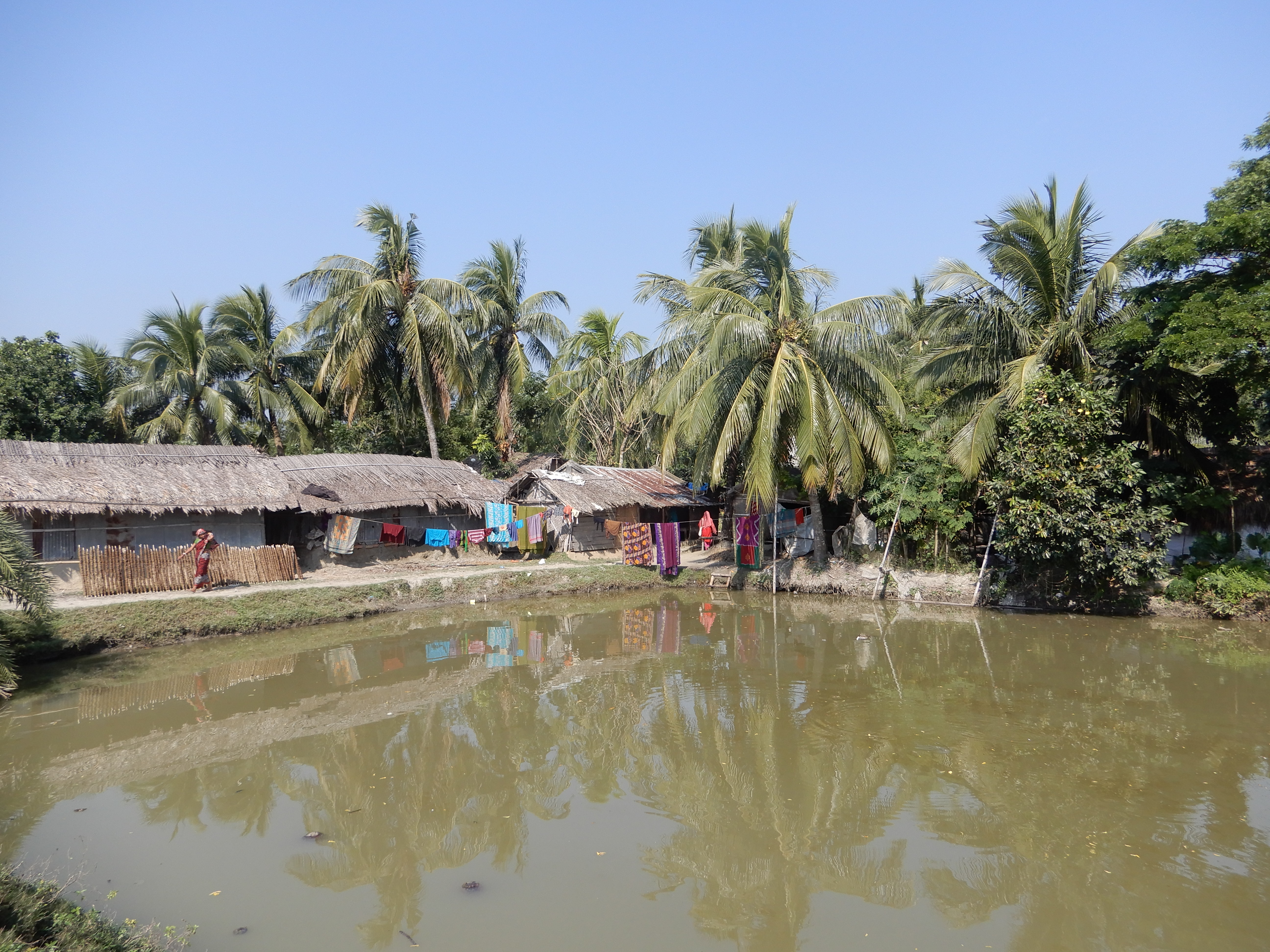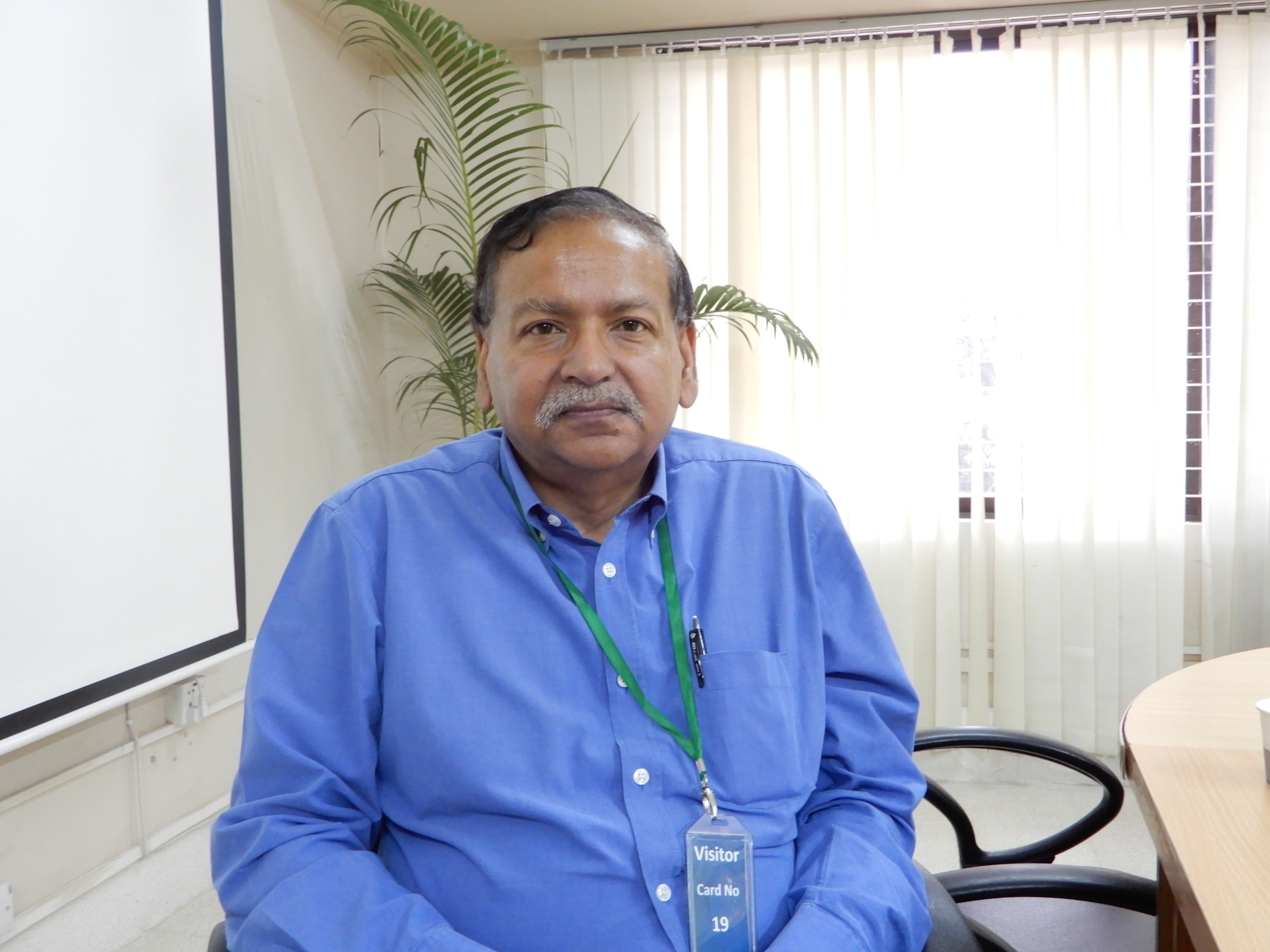
In response to Australians still caught up in the debate over whether climate change is real, Dr Saleemul Huq said he wouldn’t bother speaking with them, as they are a waste of his time.
On the impact the climate crisis has already had upon his country, the leading climate expert returned: “Don't even cite Bangladesh. Cite Australia”. He has a point — as the two of us spoke in late November in Dhaka, bushfires were sweeping across Australia’s eastern seaboard.
Huq had just finished addressing colleagues at a preparatory meeting for the Gobeshana 6 International Climate Conference set to be held in Dhaka this month. It is a climate adaptation meeting, at which Bangladeshi Prime Minister Sheikh Hasina will feature prominently.
Hasina’s participation at a climate conference is in stark contrast to what we have come to expect in Australia. I mentioned to the doctor that Prime Minister Scott Morrison had been silencing any suggestions that the unfolding bushfire crisis was somehow climate-related.
“He’s a criminal,” Huq retorted, leaning forward in his chair. “An absolute criminal who is in the pocket of the fossil fuel industry.” Huq went on to explain that his country stopped debating climate change a decade ago and has since forged ahead with developing solutions.
Frontline climate adaptation
Ranked as one of the world’s least developed countries, Bangladesh is also one of the lowest global emission contributors. However, its geography leaves it particularly vulnerable to intensifying climate, as it is a flat, low-lying region, in the path of three of the world’s greatest rivers.
Mahmudkati village is likely soon to be submerged.JPG

A recent Pentagon-commissioned report points to Bangladesh being one of the nations set to be hit hardest by escalating weather patterns. As director of the International Centre for Climate Change and Development (ICCCAD), Huq explained that it is usually listed in the top three most affected countries.
Climate scientists predict that about 17% of the country’s landmass will be underwater by 2050. Lost due to rising sea levels and riverbank erosion, most of this land will disappear from the south-west, which could lead to as many as 20 million internally displaced persons.
With a population of around 164 million people, Bangladesh is not only one of the most populated countries, but is amongst the most densely so. Around 2000 internal migrants are arriving daily in the overcrowded capital, Dhaka, many fleeing the effects of climate change.
Land loss and displacement
Of the more than 20 million people living in Dhaka, about 40% either live in shanty towns or in a state of homelessness. The Mirpur precinct’s Bhola slum is one of the city’s oldest. It grew out of the humanitarian crisis that followed the 1970 Bhola cyclone, which took half a million lives.
Huq’s assistant Noor-E-Elahi took me to the dwelling of Muhammad Farooq Hussain, who administers the slum on behalf of the 450 families living there. Following the 1970 disaster, the now 57-year-old father-of-four was one of the first to arrive in the area, which used to be a wetland.
Alomgir Shikdar is a Dhaka slum dweller, who has been displace by climate_0.jpg

Hussain related that since 1999 the flow of internally displaced persons from southern Bangladesh has increased significantly, which he puts down to land loss caused by rising sea levels and erosion.
Back out on the narrow streets of the slum, we bumped into a group of ex-fishers at a tea stall. One of them, Alomgir Shikdar, said he arrived in the capital two years ago looking for better employment opportunities, after his land in the southern district of Bhola vanished.
The 28-year-old father-of-two explained that after the “land of his ancestors disappeared”, he initially moved to another southern fishing area. However, with displacement, the concentration of fishers in the area was growing, so the old way of making a living was increasingly unviable.
Future submergence
As Huq explained, the frontline of impacting climate in his country is the south-west region, and he advised heading there. A week later, I arrived in Khulna. It is a city located in the world's largest river delta, and is predicted to be completely submerged within the next three decades.
“It’s difficult to understand why we’re living here after knowing that effect,” said Himadree Shekhar Mondal, a climate change and disaster management cell team leader with An Organisation for Socio-Economic Development (AOSED). “But, the people also live beside the volcano.”
AOSED is the leading non-government organisation in south-west Bangladesh. It works with delta fishing and farming villagers experiencing climate-related hardships, securing their rights and assisting with adaptation strategies.
In speaking with the NGO’s staff, I found they share the same attitude to the crisis as their ICCCAD counterparts in Dhaka: no allowance is given for climate denial, as it is a well-established fact. And rather than despairing, those engaged in climate adaptation strategies are building resilience.
Diminishing returns
Kali Das Biswas is a 37-year-old mother-of-two living in the fishing village of Ramanathpur. It is situated about an hour and a half drive south of Khulna and is comprised of 35 fisher and 100 farmer households. The village sits on the bank of a river, which a few years back was only a stream.
“For a decade, we are experiencing sudden changes in temperature. There’s riverbank erosion. There’s the increase of salinity, which affects agriculture,” Biswas explained. “We’re also experiencing sudden changes in seasons. There were six seasons. Now, it has come to three.”
Farmer Sanjay Mondal said that much of their cultivatable land has eroded into the ever-growing river. This has led villagers to move inland and many have had to seek other employment. Indeed, Biswas had moved from elsewhere, as her ancestral land has vanished.
AOSED monitoring and documentation officer Salahuddin Apu told me that when he first came to the village two years ago, the riverbank stood at what is now midway across the body of water. If this continues, where we and the entire village are seated will soon be lost to the water.
At the nearby village of Mahmudkati, the fishers’ wives explained that they are lonely, as their husbands are mainly stationed out at sea for six months of the year. Two of the women, Saraswati and Uma Biswas made clear that their village is in danger.
The eroding bank is obvious in this area. Along the riverside runs a dirt road that in the past served as a route for vehicles. However, today more than half of it has sunk into the water. Once it is completely gone, the village will flood.
Uma Biswas (left) and Saraswati Biswas (on the right) warn that their village may be lost.JPG

“We’re really concerned about the erosion. If it continues, we will have to leave our homes and our agricultural fields,” says Sanjay Das, a local farmer. “We will have to migrate from here to another place. And we don't know what will happen after that. All the area around here will be underwater.”
The villagers stress that they don’t want to move to the city, as they don’t know how to live in such an environment. They are rural people. And while they know of families from other villages who have had to migrate to urban areas, they are unsure of their fate on arrival.
Nowhere to hide
As I left the meeting with Huq, a pollution-affected orange sun hung in the sky above Dhaka. It was the same scorched star that has been hovering over Sydney during recent months, except in the South Asian city it is no anomaly. Rather, it is a common, long-term occurrence.
The doctor concluded our discussion with an analogy, where he likened climate change to an alien force attacking Earth. “It doesn't matter which country you live in, ultimately, everybody everywhere is going to be affected by this alien invasion,” he explained.
These aliens arrived in Bangladesh ten years ago. The people there have been learning how “to combat them”. But, soon, these aliens will arrive everywhere else: in “Washington, London and Berlin”. These countries will then turn to Bangladesh for assistance on how to deal with them.
As for Australia, Huq is clear that the aliens have already arrived, “but Australia doesn’t want to recognise it”. This is certainly true as far as the PM is concerned. Despite 6 million hectares having burnt, Morrison continues to refuse to do anything to even partially deal with the burgeoning crisis.
Climate expert Dr Saleemul Huq asserts that Scott Morrison is a climate criminal.JPG

However, in regard to the general population, this has been changing over the last 12 months. There has been growing acknowledgement that a climate emergency is unfolding, and in the weeks since I spoke to the doctor, the unprecedented fires have really brought the crisis home.
This was broadly evidenced across the nation on January 10, when tens of thousands gathered on the streets to call for climate action. In Sydney, where about 50,000 demonstrators brought the CBD to a standstill, the general fervour among the crowd spoke of the need for change.
Right now, the great southern continent has been charred to a point that makes it impossible to conceive of returning to a climate debate. So, the only valid option forward is to accept the land has been scarred as never before, and just like Bangladesh, look towards adaptive approaches.
[Paul Gregoire is a Sydney-based journalist and writer for Sydney Criminal Lawyers.]